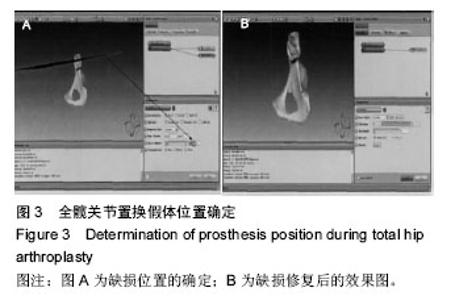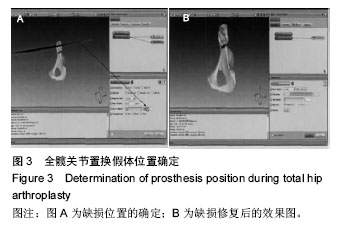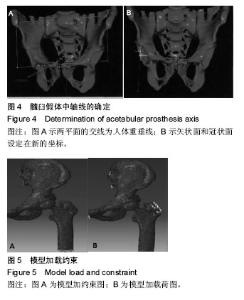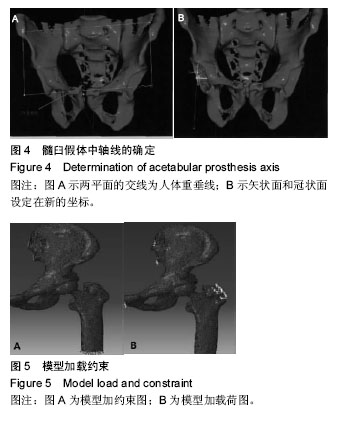| [1] Clavé A, Fazilleau F, Dumser D, et al.Efficacy of tranexamic acid on blood loss after primary cementless total hip replacement with rivarox- aban thromboprophylaxis: a case -control study in 70 patients.Orthop Traumatol Surg Res. 2012;5: 484-490.
[2] Alshryda S.Topical(intra-articular)tranexamic acid reduces blood loss and transfusion rates following total knee replacement: a randomized controlled trial(TRANX-K).J Bone Joint Surg Am. 2013;21: 1961-1968.
[3] 张波,庞清江,章海均,等.全膝关节置换术后隐性失血的研究进展[J].中国骨伤,2012,25(9):788-792.
[4] Alshryda S,Mason J,Sarda P,et al.Topical (intra-articular)tranexamic acid reduces blood loss and transfusion rates following total hip replacement: a randomized controlled trial (TRANX-H).J Bone Joint Surg Am. 2013;21: 1969-1974.
[5] Irwin A, Khan SK, Jameson SS, et al.Oral versus intravenous tranexamic acid in enhanced-recovery primary total hip and knee replace- ment: results of 3000 procedures.Bone Joint J. 2013;11: 1556-1561.
[6] Wong J,Abrishami A,El Beheiry H,et al. Topical application of tranexamic acid reduces postoperative blood loos in total knee arthroplasty: a randomized, controlled tril. J Bone Joint Surg Am. 2010;15: 2503-2513.
[7] 谢锦伟,岳辰,裴福兴.氨甲环酸在全髋关节置换术中的有效性与安全性研究进展[J].中国矫形外科杂志,2014, 22(20):1856-1860.
[8] 刘旭东,张先龙,曾炳芳,等.全髋关节置换术后的隐性失血分析[J]. 中国矫形外科杂志,2011,19(12):995-997.
[9] 肖鹏,吴学建,刘宏建.人工关节置换术后隐性失血的相关分析[J].中国组织工程研究与临床康复,2008,12(4): 635-638.
[10] Bao N,Zhou L,Cong Y,et al.Free fatty acids are responsible for the hidden blood loss in total hip and knee arthro- plasty. Med Hypotheses. 2013;81(1): 104-107.
[11] 高玉镭,王东辰,李佩佳,等.人工全髋关节置换术隐性失血量的估算及原因分析[J].实用医药杂志,2012,29(6): 490-492.
[12] 罗涛,黄伟杰,吴伟,等.股骨粗隆间骨折围手术期隐性失血初步分析[J]. 实用骨科杂志,2011,17(9): 796-799.
[13] Li J,Zhou Y,Jing J,et al.Comparison of effects of two anti-coagulants on hidden blood loss after total hip arthroplasty. Zhongguo Xiu Fu Chong Jian Wai Ke Za Zhi. 2013;27(4): 432-435.
[14] 李少斐,郭亭,赵建宁,等.围髋关节置换期隐性失血相关危险因素及预后[J].中国组织工程研究,2014,18(13): 2006-2011.
[15] 庞向华,欧阳建江,欧兆强,等.隐性失血与全髋关节置换术后髋关节功能的相关性及影响因素[J].广东医学,2013, 34(3): 420-422.
[16] 丛宇,赵建宁,包倪荣,等.隐性失血对全髋关节置换术后功能恢复影响的临床观察[J].中国骨伤,2011,24(6): 466-468.
[17] 米尔阿里木•木尔提扎,赵巍,王利,等.患者体重指数对全髋关节置换手术时间的影响研究[J].实用骨科杂志,2014, 20(10):938-941.
[18] 王世海,颜冰.肥胖对全髋关节置换术后隐性失血的影响[J].深圳中西医结合杂志,2014,24(9):119-120.
[19] Smith TO,Hing CB.Is a tourniquet beneficial in total knee replacement surgery? A meta - analysis and systematic review. Knee. 2010;17(2): 141-147.
[20] Douketis J.Apixaban reduced VTE and did not increase major bleeding compared with enoxaparin in hip replacement. Ann Intern Med. 2011;154(10): J05-J07.
[21] Kelly EG,Cashman JP,Imran FH,et al.Systematic review and meta - analysis of closed suction drainage versus non -drainage in primary hip arthroplasty. Surg Technol Int. 2014;24(3):295-301.
[22] 李军,荆珏华,史占军,等.利伐沙班对全髋关节置换术隐性出血影响的病例对照研究[J].中国骨伤,2014,27(1): 34-37.
[23] 王凯博.关节置换术后自体引流血液回输的安全性及有效性[J].科技信息,2012,15(15):450-451.
[24] 窦亚栋,赵德伟,郭林,等.外侧入路小切口全髋关节置换治疗老年股骨颈骨折[J].湖南师范大学学报:医学版,2014, 11(4):68-70.
[25] 张晓强,高菲菲,王战朝,等.膝伤活血灵口服配合低分子肝素钙皮下注射对全膝关节置换术后隐性失血的影响[J].中医正骨,2014,26(4):23-25.
[26] 郑明,林凤飞,林朝晖,等.不同材料假体人工全髋关节置换效果的临床观察[J].中国矫形外科杂志,2009,17(13):977-979.
[27] Al-Hajjar M,Leslie IJ,Tipper J,et al.Effect of cup inclination angle during microseparation and rim loading on the wear of BIOLOX delta ceramic-on- ceramic total hip replacement.J Biomed Mater Res B Appl Biomater. 2010;95(2): 263-268.
[28] Kim YH,Choi Y,Kim JS. Cementless total hip arthroplasty with ceramic-on-ceramic bearing in patients younger than 45 years with femoral-head osteonecrosis.Int Orthop. 2010;34(8): 1123-1127.
[29] 于德水,张元和,曹阳,等.Delta陶瓷人工假体在全髋关节置换术中的应用效果观察[J].山东医药,2012,52(10): 36-38.
[30] Schroder D,Bornstein L,Bostrom MP,et al.Ceramic-on- ceramic total hip arthroplasty: incidence of instability and noise. Clin Orthop Relat Res. 2011;469(2): 437-442.
[31] 胡孔足.干骺端固定解剖型非骨水泥柄结合陶瓷对陶瓷全髋关节置换治疗30岁以下患者的临床结果[J].临床骨科杂志,2012,15(5):523.
[32] Hannouche D,Zaoui A,Zadegan F,et al.Thirty years of experience with alumina-on-alumina bearings in total hip arthroplasty.Int Orthop. 2011;35(2): 207-213.
[33] 罗勤瑜,胡奕山,陈春雷,等.大头径陶瓷-陶瓷全髋关节置换的早期疗效[J].中国组织工程研究,2012,16(9):1559-1563.
[34] Petsatodis GE,Papadopoulos PP,Papavasiliou KA,et al.Primary cementless total hip arthroplasty with an alumina ceramic-on-ceramic bearing: results after a minimum of twenty years of follow-up.J Bone Joint Surg Am. 2010;92(3) : 639-644.
[35] 姚进.不同材料髋关节假体在髋关节置换中的应用[J].中国组织工程研究与临床康复,2011,15(17): 3196-3198.
[36] Lombardi AV Jr,Berend KR,Seng BE,et al.Delta ceramic-on-alu- mina ceramic articulation in primary THA: prospective,randomized FDA-IDE study and retrieval analysis. Clin Orthop Relat Res. 2010;468(2): 367-374.
[37] 张海宁,王英振,吕成昱.大直径陶瓷/陶瓷人工全髋关节置换治疗股骨头缺血坏死[J].中华关节外科杂志:电子版, 2012, 6(2):10-12.
[38] 冯建民.全髋关节置换假体承重面的选择[J].中华临床医师杂志:电子版,2011,5(21):6204-6207.
[39] 陈界文,翟文亮.全陶瓷关节假体在全髋关节置换术中应用[J].中国中医骨伤科杂志,2011,19(6):67-69.
[40] Chevillotte C,Pibarot V,Carret JP,et al.Nine years follow-up of 100 ceramic-on-ceramic total hip arthroplasty. Int Orthop. 2011;35(11): 1599-1604. |



